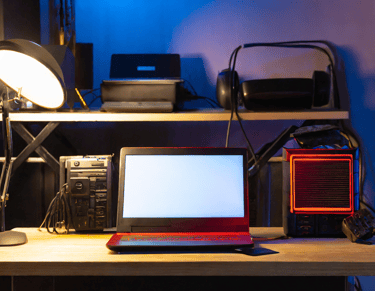AllStarLink - Windows PC running AllStarLink and iaxrpt client
Getting your own AllStarlink node up and running on Windows using virtual machine on your own PC; then using iaxrpt Windows application to communicate via AllStarLInks


You do not need to have a personal 'node' to utilise the AllStarLink system. There are many clients which will allow you to connect to other existing 'nodes' on various OS/platforms if that is all you want to do.
Assuming you would like to hardware 'build' your own node then this is also possible using Raspberry Pi Units using a similar setup of the software available from the AllStarLink web site.
Using this route allows connection of 'radio' hardware interfaces to allow connection from your radios to your personal node.
(Commercial nodes are also available pre made and configured if required.)
This post covers the steps involved in getting an AllStarLink Node setup and running on Windows PC without the need to purchase any hardware etc. ("Radioless")
With you own 'node' setup you can then use Windows application to connect to it and bridge over to any other nodes using a simple web based setup. Hence have a local Windows based setup for using AllStarLink network node under your control.
The steps to do this break down as follows:
Get Node number assigned on the AllStarLInk Portal for you account.
Download and install a free Virtual Machine application for Windows.
Using the ISO file available from AllStarLInk create Virtual instance of the AllStarLInk software, and then run the configuration of the node.
Optionally download and install iaxRPT software client and check connection to your personal node.
Use the AllMon2 Web interface system (included in the release) to manage links as required. (or Supermon if preferred)
Step1: Getting a Node Number from AllStarLink
There is a good set of instruction on the AllstarLink web pages on how to get the node requested and assigned.
Assuming you have already got an AllStarLInk Account. (if not then create one for your callsign)
Login to your account and then goto the Menu option "Portal".From there use the "Server Settings" to create your Server node and provide details of location name etc
The using the Portal "Node Settings" option create a node number which is then attached to your server you just created.
The details of the node and password will then be provided to you. make sure you make a note of these setting for later.
See the Wiki Guide for more if information this section here;
Step2: Installing Virtual Machine application on the Windows PC.
In order to try and do all the setup without having to purchase any software, the method I chose to make the Virtual Machine using the free option available from Oracle called "Virtual Box" .
There are many other virtual machine applications available out there to choose from; take your pick.
I choose the VirtualBox application as I had used it before and met the 'free' category etc.
(All of this could also be done on a remote 'cloud' server that could purchase to do this. Also lots of choice which one to use.)
As with most of these type of applications it is possible to create a virtual machine with configurable memory, processor and other aspects to meet your requirements.
The AllStarLink node machine creation is essential a simple Linux install so there is no real need for anything too powerfull or memory intensive etc.
Step3: Create Virtual Linux Machine using the ISO from AllStarlink Group.
The ISO can be downloaded from the AllStarLink web site here:
I choose to install the Beta version 2 Intel latest build, but there are choices depending on what you want to do.
All you have to do is download the ISO file, then create a NEW virtual machine with 'VirtualBox' using the ISO file for install etc.
Once the machine is built as you want configured, Eg network and other settings, it will start using the ISO and install all the applications needed for the Linux AllStarLink node virtual machine .
Once that it done the Virtual Machine will reboot and allow you to login to the linux machine Username='repeater' Password='allstarlink'
During first start of the machine it will request password change etc.
Then you can run the 'asl-menu' application to configure your node. See the details for this here:
It will required the node information that you request way back at step 1.
There is a optional set of menus for setup of EchoLink on your node if required.
Make a note of IP and password setting you used during this first setup.Once that is done you can restart the virtual machine and it should be running.
Test the connection using an existing client to check that you can connect to the node. (If not then go back to the menu option to see if there are any differences in the setup you have.)
Step4: Install the optional Windows iaxRpt client
The application 'iaxrpt' is not required to have you node up and running . It is an optional client application to allow you to connect to the AllStarLink node you created.
The iaxrpt windows executable install application can be downloaded from the web site here:
The AllStartLink website has information on it here:
Step5: Manage your Node connections using the AllMon2 web based interface of you personal node.
The AllMon2 code was all part of the AllStarLink Beta Install.
You need to do some edits to config files on the node and then it was just a case of using a web/browser and then going to the IP address of you virtual machine 'node' and then using the Web Interface controls to configure connections as required.
There is also the option to use 'Supermon' linux application (similar in concept to allmon) with web browser to perform a similar control of you personal node with connections etc. This can be installed on the linux box and config files setup.


